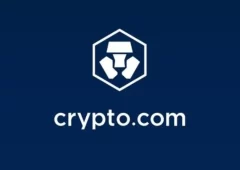Fed Holds Rates Steady as Uncertainty Grows
29.01.2025 21:00 1 min. read Alexander Zdravkov
The Federal Reserve has decided to keep interest rates unchanged, opting for caution as it monitors inflation and the economic impact of President Donald Trump’s early policies.
Since returning to office, Trump has issued executive orders, including a spending freeze, and threatened 25% tariffs on Mexican and Canadian imports, moves that could fuel inflation.
Meanwhile, the U.S. trade deficit surged 18% in December, as businesses rushed to import goods ahead of potential policy shifts.
While some investors expect rate cuts later in 2025, the Fed remains hesitant, wary of reversing course if inflation picks up. Bond markets have responded with rising long-term yields, reflecting doubts over future monetary policy.
At his press conference, Fed Chair Jerome Powell reaffirmed the bank’s independence, dismissing Trump’s calls for immediate cuts. With inflation still above target and growth strong, the timeline for rate reductions remains uncertain.
-
1
Russia’s Oil Revenues Strained as Exports Decline Again
24.06.2025 18:00 2 min. read -
2
Recession Fears Linger as Economic Signal Flashes Long-Term Warning
25.06.2025 9:00 2 min. read -
3
Robert Kiyosaki Predicts When The Price of Silver Will Explode
28.06.2025 16:30 2 min. read -
4
Gold Beats U.S. Stock Market Over 25 Years, Even With Dividends Included
13.07.2025 15:00 1 min. read -
5
Trump Targets Powell as Fed Holds Rates: Who Could Replace Him?
27.06.2025 9:00 2 min. read
Gold Beats U.S. Stock Market Over 25 Years, Even With Dividends Included
In a surprising long-term performance shift, gold has officially outpaced the U.S. stock market over the past 25 years—dividends included.
U.S. Announces Sweeping New Tariffs on 30+ Countries
The United States has rolled out a broad set of new import tariffs this week, targeting over 30 countries and economic blocs in a sharp escalation of its trade protection measures, according to list from WatcherGuru.
Key U.S. Economic Events to Watch Next Week
After a week of record-setting gains in U.S. markets, investors are shifting focus to a quieter yet crucial stretch of macroeconomic developments.
Robert Kiyosaki Predicts When The Price of Silver Will Explode
Robert Kiyosaki, author of Rich Dad Poor Dad, has issued a bold prediction on silver, calling it the “best asymmetric buy” currently available.
-
1
Russia’s Oil Revenues Strained as Exports Decline Again
24.06.2025 18:00 2 min. read -
2
Recession Fears Linger as Economic Signal Flashes Long-Term Warning
25.06.2025 9:00 2 min. read -
3
Robert Kiyosaki Predicts When The Price of Silver Will Explode
28.06.2025 16:30 2 min. read -
4
Gold Beats U.S. Stock Market Over 25 Years, Even With Dividends Included
13.07.2025 15:00 1 min. read -
5
Trump Targets Powell as Fed Holds Rates: Who Could Replace Him?
27.06.2025 9:00 2 min. read


